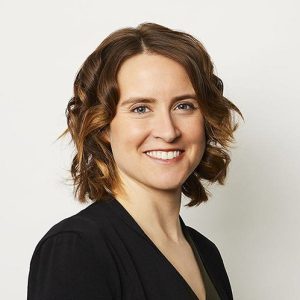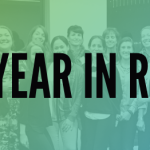
Through the daily grind, Keally found time to have a meaningful conversation about weaving together the Cleantech space, looking internally to find your path and opening doors through vulnerability.
On Keally’s Career Journey & Learnings
What is your Cleantech journey? How did you end up at GAF Energy?
There was no clear path when Keally’s journey in cleantech began. There were certain technologies that existed and her own will to make changes to clean energy, but it was all so nascent. She wanted an impactful journey and with the threat that climate change was presenting, along with the science to back it up, she knew the importance of responding immediately. With her education in environmental science and environmental communication, she was equipped to act. Persuasion and human behavioral change were the building blocks that she needed to walk her path, a path very few were willing to travel (quote inspired by Antonio Machado). This naturally aligned with her expertise in communications and building relationships. With that as her north star, she acquired roles that would provide her with the platform to communicate the needs of the future while building relationships.
After holding roles in government, nonprofits, and universities, she started her cleantech journey with an eye toward scale as the head of marketing for the largest solar company in the Northeast, scale she knew was needed given the urgency of emission reductions the planet needs to sustain. This thinking led Keally to Sunrun, the United State’s largest residential solar company, where their mission is to create a planet run by the sun. Not only is the external mission of Sunrun to create a planet run by the sun, but Keally was drawn to the internal demographics of women running things, where at the time, and still today, cleantech positions are held predominantly by men. She then joined SunPower to learn the manufacturing part of the industry, held a role at Mosaic to gain knowledge on the fintech side of cleantech and now has been at GAF Energy for nearly 4 years where she is using her building blocks of persuasion and behavioral change to continuously shape the industry through public policy and marketing. Having a myriad of roles has let her experience how all functions are stitched together that truly propel the industry forward.
The passage of the Inflation Reduction Act will certainly create more Cleantech careers, where do you think the upcoming Cleantech talent pool should look to tap into?
Keally wants you to “take stock of what you have to contribute because there is so much work to be done.” She believes that we need to interrogate different technologies, become aware internally of our skill sets and then merge our curiosity and passion with those two things.
For example, climate mitigation, which includes working on EV’s or carbon capture would be perfect for someone who wants to focus on emission reductions. On the other hand, we also need people working in climate adaptation, which is looking at the new ways of living in our society that take into consideration things like land use and disaster preparedness.
Thought bubble from Keally: “We have not figured everything out yet. We are actively trying to answer what a clean energy transition looks like and how we build it better than what we’ve had to date and there is truly so much upside for creative and equitable thinking to blaze a new trail.”
On policy in a volatile energy landscape
I assume your Policy role is far from boring as we continue to grapple with strong energy demand, climate impacts on supply and the invasion of Ukraine that is also tightening our supply. What have you learned about yourself and/or the renewables industry as we continue to face headwinds?
“Grit is often seen as a key predictor of success in human psychological study. I think that holds true for growing industries as well. We need to keep finding paths to market despite volatility, tapping into resilience and innovation in our business planning. And pushing through the lean times, knowing that we are on the right path overall, as costs come down and demand for carbon-neutral or carbon-negative energy rises.”
On how Keally thinks about DEI
What are creative ways you are seeing, or incorporating, mentorship practices that truly capture diverse participation?
Don’t be afraid to speak your mind in the workplace so that you signal what you are willing to stand for as a leader and a member of the team. This opens the door for others who are thinking of asking a similar question or speaking up on a difficult topic, but maybe are hesitant. When this happens and a safe space is made, vulnerability is allowed to emerge and can lead to a relationship between like-minded individuals. Because of Keally’s willingness to uncomfortably but heroically stand up for what she believes in, it recently led to a natural mentorship that would not have been created otherwise.
What is a really proud moment of a mentorship program that led to a successful outcome? What made it so successful in your opinion?
Keally observed that a women’s group she engaged in was skirting around really important topics and so she oriented her thoughts and decided to act–a true OODA loop process.
She took action by speaking up and proposed that they concretely discuss salary negotiations and how to a) think about b) frame and c) ask for what you are worth. She tapped a male executive ally. He taught them to frame the conversation in your head about what strengths you can lean into and understand how far you can reach in your salary discussion, which is typically more than you think, especially for high-performing women. Why bring in a male ally? It is more common for men to have a mentor that teaches them the influence and confidence needed early on and are clued into the process in subtle and direct ways, knowing more fully what is possible in salary negotiations. Further, as you move up the ladder there are fewer women in senior roles, making it that much easier for the men that have the male role models and mentors to truly learn the art of higher level negotiations.
Because of Keally’s willingness to bring up a taboo topic, she thinks it will lead to increased salaries (hopefully in the millions) over the course of these women’s careers.
Tell us all why you are excited to be a speaker at WCS Talk this year!
“We gather and we gain strengths from each other.” She believes that there is something about being in a room together and talking about the opportunities and challenges in the industry within our own career process. It’s also been awhile since we have physically been together which is energizing and exciting.
Interview by Serina Lesnar



